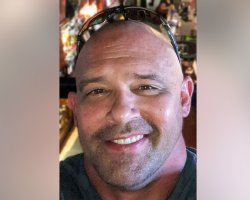Solving the Opioid Crisis:
The Effects of Misplaced Control, Part II
A Three-part Series

When doctors prescribe any drug, it should be only when it is needed to improve a patient’s health, right? Over the last few decades, this area of medicine has changed drastically, and millions of Americans have suffered as a result. In Part II of this series, we will continue to look at the organizations or individuals that have usurped control over prescribing rates and policies, taking it out of the hands of properly trained doctors. First, a look at the undue influence wielded by some organizations that were supposed to be unbiased non-profits, and then, how patients themselves became part of the problem.
Non-profit organizations supposedly advocating for pain patients but financed by pharmaceutical corporations
While lobbyists were courting Senators and Congressmen and while pharmaceutical representatives were wining and dining doctors, several non-profit organizations were promoting pro-opioid procedures and policies into the medical field and directly to patients. Organizations like the American Academy of Pain Medicine, American Pain Society, Pain and Policies Studies Group, American Pain Foundation, Pain Care Forum and the Center for Practical Bioethics were establishing prescribing guides and advice materials for both doctors and patients.
But there is plenty of evidence that these groups were often financed or even founded by pharmaceutical interests. For example, Purdue Pharma’s Washington Lobbyist Burt Rosen co-founded the Pain Care Forum more than a decade ago. As reported by Huffington Post, this group met with both doctors and patients in Washington to ensure Americans “had easy access to opioids.”
The possibility of undue influence being exerted by pharmaceutical-funded groups led to a 2012 investigation of several of these groups and pharmaceutical corporations by the Senate Finance Committee. The Federation of State Medical Boards was also being investigated by the Senate Finance Committee who wanted to know all payments received from organizations that make, manufacture, market or promote the use of opioids. The Finance Committee has never issued a report on the findings of their investigation.
Patients
Direct-to-consumer advertising became legal in 1985 but it didn’t really hit its stride until the FDA modified the rules in the mid-1990s. As these rules loosened, spending to advertise directly to patients increased from $55 million (1991) to $363 million in 1995. According to the World Health Organization, the pharmaceutical industry now spends $6 billion per year to advertise its wares directly to potential patients.
Does this advertising work? In 2014, researchers recruited actors who would ask a doctor either for a specific drug for an ailment, such as sciatica or arthritis in the knee, or, alternatively, for any remedy that would help the pain. The results of the study found that a specific request greatly increased the chance that the doctor would, indeed, prescribe the requested drug. Of the pretend-patients asking for a hydrocodone product, about 20% got what they asked for while only 1% of those who asked the doctor to prescribe “something to make it better” did.
Who authorized American media to allow this direct-to-consumer advertising? The Food and Drug Administration heavily regulates pharmaceutical promotion.
Television networks/magazine advertising
Should we include television networks and magazines in this list of organizations improperly involved in controlling the distribution of these drugs? If we did, we could talk about these facts:
- Television receives the bulk of direct-to-consumer drug advertising.
- One analysis of advertising aired during the CBS Evening News showed that 72% of the commercial breaks contained at least one drug ad.
- Commercial breaks during General Hospital include a drug ad 62% of the time.
- If the advertising were to stop, networks and cable channels would lose 8% of their income.
- For magazines, drug advertising is in second place, with only cosmetics and toiletries generating more revenue for publishers.
There is plenty of evidence that control of our prescribing has been handed over to all these individuals and organizations discussed in Parts I and II of this series. But any rational person could easily see that prescribing control by anyone other than a properly trained, unbiased physician could lead to life-threatening situations, even fatal ones. And it has.
The Effects of Misplaced Control
The first of these three charts shows the increase in prescribing for common painkillers oxycodone (the main ingredient in OxyContin and others) and hydrocodone (Vicodin, Lortab and many more).

The second chart shows the increase in opioid overdose deaths. These two trends are obviously related. (The steep increase at the end of this time period resulted from the arrival of illicit fentanyl in U.S. drug supplies.)

There’s one more chart you should see while we are on this subject. In 2010, Purdue Pharma reformulated OxyContin into an abuse-deterrent pill. What that means is this: Before 2010, if a person wanted to abuse this potent painkiller, they crushed it and snorted it or dissolved it and injected it. After 2010, when the pill was subjected to crushing or dissolving, it would turn into a gummy substance that was much harder to abuse. But all a person would have to do is find a heroin dealer to provide a substance that was much the same as OxyContin. Any intelligent person could see that the migration to heroin was coming but it seems that this outcome was ignored or discounted.

Purdue was allowed to change this formula, the FDA approved it but this (chart at right) is what happened to heroin overdose deaths. Note the increase in heroin overdoses after this 2010 change.
While that is an important point, the main thing we can learn from this information is that increased prescribing of addictive painkillers has been an integral part of the opioid addiction and overdose problem we currently have. You might conclude, like we have, that correct medical control of prescribing has been lost and instead, prescribing practices have been unduly influenced by direct-to-consumer advertising, lobbying and pharmaceutical marketing.
The Example of Purdue Pharma
The easiest way to grasp the way pharmaceutical companies and their sales representatives have hijacked this control is through the example of Purdue Pharma. In 2007, Purdue was assessed total fines of $634.5 million for fraudulent marketing practices that convinced doctors that their painkiller formula OxyContin was virtually non-addictive. In just five years, the number of OxyContin prescriptions increased twenty-fold. This increase was followed by widespread addiction to painkillers and then to heroin and fentanyl. And increased addiction has been followed by increased overdose deaths.
Currently, there are lawsuits being filed by states, counties, cities and hospitals all over the country, against Endo Pharmaceuticals, Johnson & Johnson/Janssen, Teva Pharmaceutical and Allergan in addition to Purdue Pharma. Drug distribution companies AmerisourceBergen, Cardinal Health and McKesson are also being sued for failing to clamp down on pharmacies or doctors who were obviously ordering far more than their share of painkillers.
In Part III of this series, we will look at how prescribing should be done if we had an ideal world where prescribing was not based on bias, false information or financial gain. We’ll also look at the effect that shift to an ideal world would have on our lives.


 ®
®